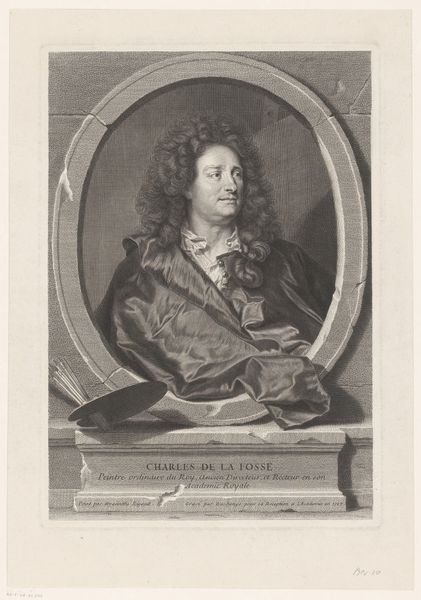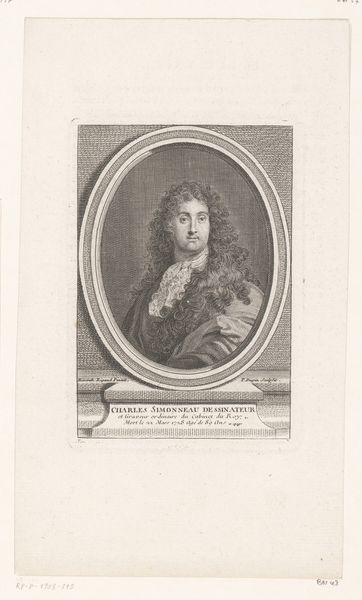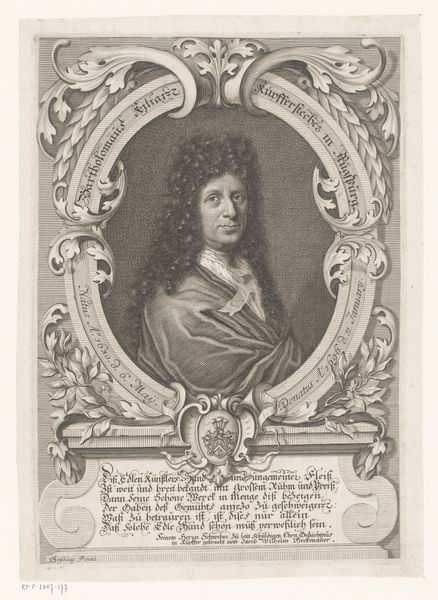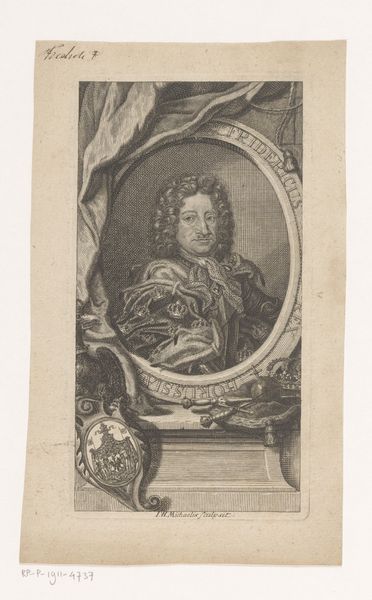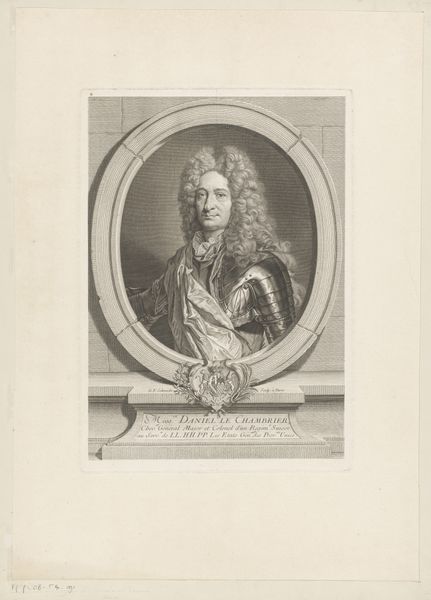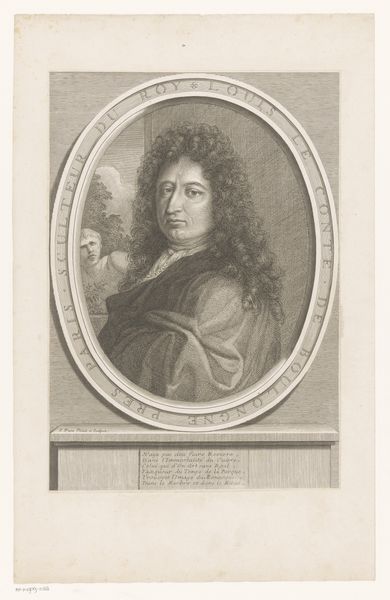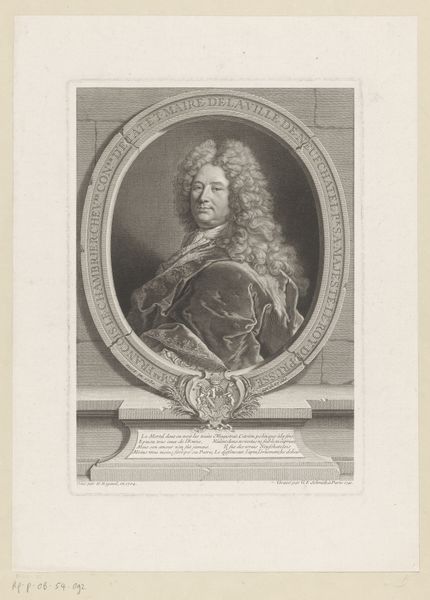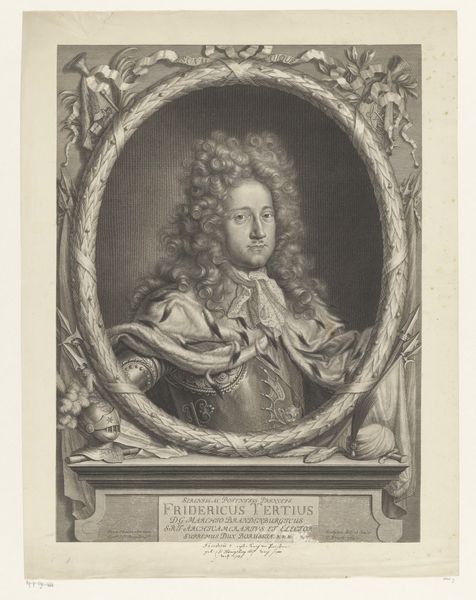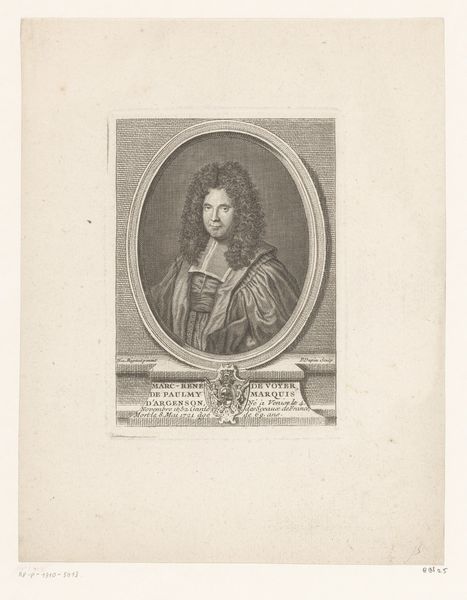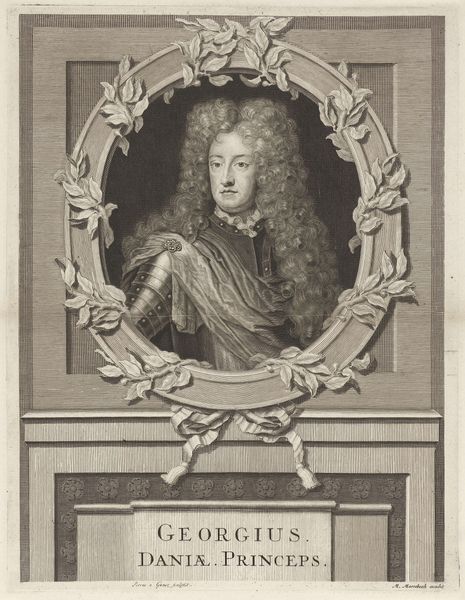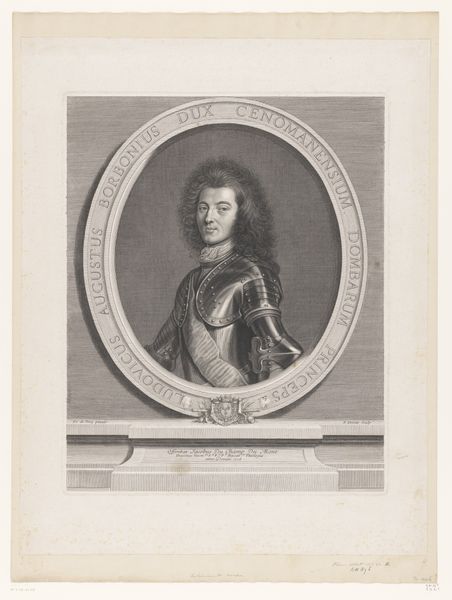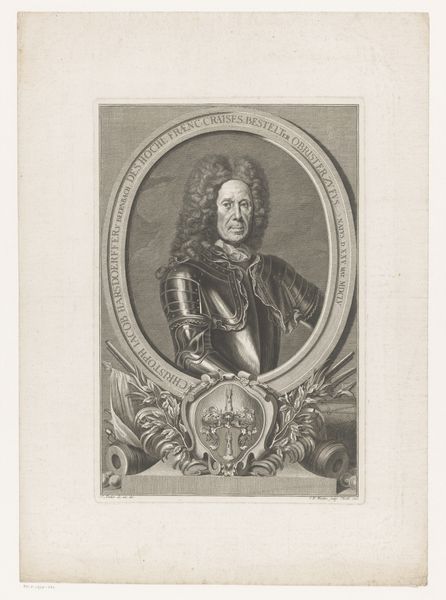
Dimensions: height 140 mm, width 100 mm
Copyright: Rijks Museum: Open Domain
Curator: This is Dominique Sornique’s 1765 engraving, "Portret van Charles de Lafosse," housed right here at the Rijksmuseum. Editor: My immediate thought is elegance—but also restraint. The monochrome focuses the eye so precisely. It feels very formal, yet somehow approachable. Curator: Absolutely. The baroque style here underscores the prestige associated with Lafosse, a prominent member of the Académie de Peinture. Sornique likely wanted to create something that reinforced Lafosse’s role and status within artistic circles. The meticulous detail emphasizes the subject's sophistication and legacy. Editor: And look at the details achievable through engraving; the material tells its own story. Think about the labor involved. Each line painstakingly etched to capture the texture of his wig, the drape of his coat… It speaks volumes about the value placed on skilled craftsmanship at that time. The physical act of creating an image contributes so much to our understanding. Curator: That's a great point. And it reflects a larger shift in art production. Engravings such as this served as crucial methods of circulating imagery and promoting artists and their accomplishments across Europe, which played an instrumental role in defining public perception of artistry. It made art accessible to a wider audience than before, although not everyone would have had access to something of this detail. Editor: Definitely. Consider the layers of labor, too—the artist’s concept, the engraver’s interpretation. It is not merely an object but the tangible outcome of complex processes shaped by social status and expectations. How this was sold, marketed and collected makes an impression in the cultural environment, it doesn't just come into existence. Curator: Precisely. Understanding its context illuminates the complex social landscape in which art thrives. That interweaving, between the tangible artistic creation, and its historical surroundings, is the fascination for me. Editor: Agreed. The focus on materiality provides another lens into viewing the production of this artwork; what we can consider in the final telling can expand if we include the material's history. Curator: Ultimately, studying this portrait encourages us to understand the values of its time. It speaks volumes about power and prestige. Editor: And how the choices made in the studio shape our perspectives centuries later. There is power in process.
Comments
No comments
Be the first to comment and join the conversation on the ultimate creative platform.
